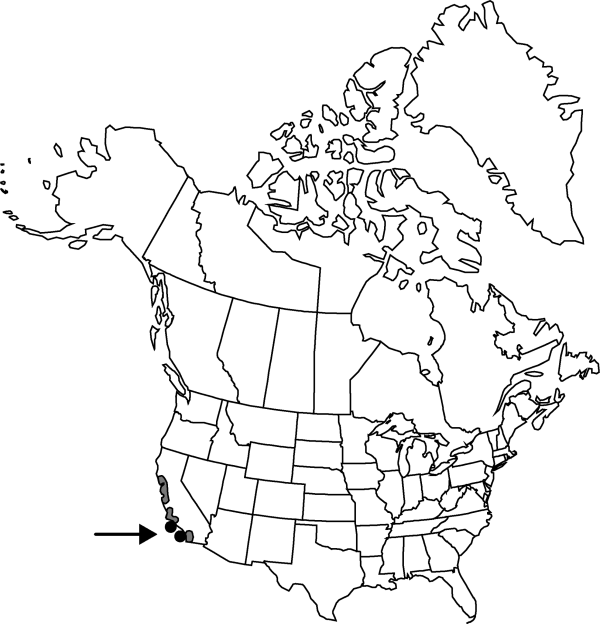Difference between revisions of "Atriplex californica"
in A. P. de Candolle and A. L. P. P. de Candolle, Prodr. 13(2): 98. 1849.
FNA>Volume Importer |
imported>Volume Importer |
||
| (5 intermediate revisions by 2 users not shown) | |||
| Line 1: | Line 1: | ||
{{Treatment/ID | {{Treatment/ID | ||
|accepted_name=Atriplex californica | |accepted_name=Atriplex californica | ||
| − | |accepted_authority=Moquin-Tandon | + | |accepted_authority=Moquin-Tandon |
|publications={{Treatment/Publication | |publications={{Treatment/Publication | ||
|title=in A. P. de Candolle and A. L. P. P. de Candolle, Prodr. | |title=in A. P. de Candolle and A. L. P. P. de Candolle, Prodr. | ||
| Line 33: | Line 33: | ||
-->{{#Taxon: | -->{{#Taxon: | ||
name=Atriplex californica | name=Atriplex californica | ||
| − | + | |authority=Moquin-Tandon | |
| − | |authority=Moquin-Tandon | ||
|rank=species | |rank=species | ||
|parent rank=subsection | |parent rank=subsection | ||
| Line 48: | Line 47: | ||
|publication year=1849 | |publication year=1849 | ||
|special status= | |special status= | ||
| − | |source xml=https:// | + | |source xml=https://bitbucket.org/aafc-mbb/fna-data-curation/src/2e0870ddd59836b60bcf96646a41e87ea5a5943a/coarse_grained_fna_xml/V4/V4_719.xml |
|genus=Atriplex | |genus=Atriplex | ||
|subgenus=Atriplex subg. Obione | |subgenus=Atriplex subg. Obione | ||
Latest revision as of 22:00, 5 November 2020
Herbs, monoecious or dioecious, prostrate or procumbent-decumbent, from fleshy fusiform or variously shaped taproot. Stems many branched, subterete, 1.5–5 dm, white scurfy when young. Leaves numerous, often crowded, alternate or proximalmost opposite; blade narrowly lanceolate to narrowly oblanceolate or elliptic, 4–20 × 1–5 mm, acute at both ends, gray scurfy. Staminate flowers in terminal bracteate spikes, or mixed with pistillate in rather dense axillary clusters, 4-merous. Fruiting bracteoles sessile, rhombic-ovate to ovate, scarcely united, 2.5–4 mm, margin entire, acute. Seeds dark (black), 1–2 mm.
Phenology: Flowering Apr–Nov.
Habitat: Sea bluffs, sandy coasts, crevices in sea cliffs, coastal strands, edges of coastal salt marsh, coastal sage scrub
Elevation: 0-50 m
Distribution

Calif., Mexico.
Discussion
H. M. Hall and F. E. Clements (1923) placed great emphasis on the inferior radicle, dioecious habit, and free bracts in stating that there are no close relatives of Atriplex californica in North America. P. C. Standley (1916) regarded the radicle as lateral or superior, not inferior, and placed the species at the beginning of his treatment of the American species. Plants of A. californica, however, form a mirror-image, matched pair with A. watsonii, with which they share habit, leaf conformation, staminate glomerules arranged, at least partially, in terminal interrupted spikes, and Kranz anatomy, but from which they differ in the radicle position, valves of the fruiting bracteoles free beyond the middle, monoecious habit, and mostly alternate leaves. The interpretation by Hall and Clements of radicle position as fundamental is made problematic by the apparent random occurrence of a great many morphologic features from place to place within the genus and often within the taxon. Each character fails individually as having definitive taxonomic importance, making difficult or impossible an ultimately satisfactory phylogenetic arrangement. It is not, however, the character that makes the species, rather, it is the entire syndrome of features that constitutes the taxon. Most certainly A. californica is more closely allied to American taxa than to those from other regions of the world.
Selected References
None.